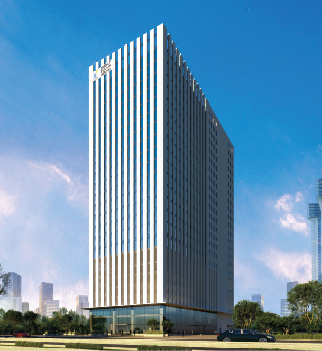
Commercial
The Role of ESG in Commercial Real Estate: What Tenants and Investors Need to Know
August 08, 2025
The commercial real estate sector is undergoing a transformative shift as Environmental, Social and Governance (ESG) factors increasingly become integral to investment decisions and tenant selection. Not just a buzzword, ESG is a pivotal consideration that drives profitability, sustainability and long-term value. In this blog, we explore why ESG is crucial for both tenants and investors, its impact on decisions in commercial real estate (CRE), and what stakeholders need to consider for achieving future-proof success.
What is ESG?
ESG refers to three key factors that assess the sustainability and societal impact of an investment in the real estate sector.
- Environmental: Focuses on the building's environmental impact, including its energy usage, carbon footprint and sustainability practices.
- Social: Deals with how a property impacts the well-being of its occupants and the surrounding community, encompassing health and safety, inclusivity and community engagement.
- Governance: Involves the management of the property, including transparent ESG reporting, regulatory compliance and adherence to ethical practices.
As we face growing environmental challenges, rapid urbanisation and a greater focus on social responsibility, ESG standards are not only a reflection of an organisation’s ethical stance but also a crucial determinant of its financial health.
Why ESG Matters in Commercial Real-Estate?
The rise of ESG-conscious tenants and investors is reshaping the commercial real estate landscape. Tenants are increasingly seeking workplaces that promote wellness, reduce environmental impact and align with their own corporate values. For investors, properties that meet ESG criteria can offer higher returns, reduced risks and a more stable, long-term investment.
Commercial real estate is no longer just about prime locations and attractive rents. It’s about creating spaces that future-proof both the built environment and the businesses within. ESG in real estate is a strategic imperative focusing on enhancing reputation, increasing asset value and attracting top-tier tenants and investors.
Investor Perspective: ESG Drives Returns and Risk Mitigation
For investors, ESG in commercial real estate is essential for long-term profitability. Incorporating ESG factors can drive higher returns, lower financing costs and create a more resilient investment portfolio.
- Higher Returns: Research shows that properties with strong ESG credentials outperform in terms of rental growth and capital appreciation. This is particularly true for buildings that are energy-efficient and well-maintained, making them more attractive to tenants.
- Lower Financing Costs: Financial institutions are increasingly offering favourable terms to investors who focus on sustainability. Green bonds, for instance, are a popular financing tool that often carries lower interest rates than traditional loans. These bonds help investors fund ESG-compliant projects, which in turn provide higher operational savings and lower risk.
- Enhanced Reputation: ESG-focused buildings attract institutional investors and corporate tenants who are prioritising sustainability. By aligning their portfolio with ESG standards, investors can improve their public image, attract more capital and mitigate reputational risks.
Examples of ESG-Driven Investment Opportunities
- Green Bonds: These are specifically issued to finance eco-friendly and energy-efficient buildings. They offer investors a way to fund commercial projects that adhere to ESG criteria, with the added benefit of lower interest rates and the potential for greater returns.
- Impact-Driven Investment Funds: Many investment funds are now focused on ESG in CRE, prioritising investments in buildings that meet environmental standards or provide social value, such as affordable housing or community-driven developments.
For investors, adopting an ESG lens isn't just about ethical responsibility, but about realising the significant financial upside in sustainability as businesses and consumers shift towards a more responsible, future-focused solutions.
Tenant Perspective: ESG-Certified Buildings Offer Healthier, More Efficient Environments
Tenants are also placing increasing importance on ESG factors when selecting office spaces, driven by the demand for healthier and more sustainable work environments.
- Healthier Environments: ESG-certified buildings often feature enhancements such as improved air quality, enhanced natural light and spaces designed to promote occupant wellness. These attributes not only boost employee satisfaction but also improve productivity and reduce absenteeism.
- Efficient Spaces: With energy-efficient systems in place, such as smart HVAC systems, LED lighting and water-saving technologies, ESG-certified buildings reduce operational costs. For tenants, this means lower utility bills and a smaller carbon footprint, which aligns with corporate sustainability goals.
- Attracting Top Talent and Clients: For businesses, working from an ESG-aligned building is a strong selling point when recruiting top talent. It positions the company as a forward-thinking, socially responsible organisation. Additionally, ESG-certified properties attract clients who value sustainability, enhancing the company’s brand and reputation.
Demand Trends in ESG Commercial Real Estate
With growing awareness of climate change and environmental degradation, demand for low-carbon, energy-efficient workspaces is at an all-time high. Businesses, especially large corporates and tech firms, are prioritising sustainability in their office spaces.
The rise of ESG-aligned tenants is not only about reducing operational costs and improving productivity but also about contributing to broader sustainability goals. As such, older, non-ESG-compliant buildings risk becoming obsolete as tenants increasingly demand spaces that align with their corporate values.
Core ESG Pillars in CRE
The core pillars of ESG in commercial real estate provide a comprehensive framework for both tenants and investors to evaluate potential buildings. Here’s how each pillar manifests in the commercial real estate landscape:
Environmental
- Energy Efficiency: Buildings equipped with energy-efficient features, such as advanced HVAC systems, LED lighting and smart systems, reduce carbon emissions and operating costs. For instance, LEED (Leadership in Energy and Environmental Design) certification highlights energy-efficient buildings that are more attractive to investors.
- Water Conservation and Waste Reduction: Properties that implement water-saving technologies and waste reduction systems, such as rainwater harvesting and zero-waste policies help conserve resources and reduce operating costs.
- Climate Resilience: With the increasing frequency of climate-related events, buildings that are designed with resilience in mind (e.g., flood preparedness, heat-resistant materials) are vital for mitigating risk and ensuring long-term property value.
Social
- Workspace Quality: High-quality air circulation, natural light and biophilic design are key components of ESG-certified properties, creating a healthier, more productive work environment.
- Community Engagement: ESG buildings often engage with the local community, offering shared amenities, public spaces or partnerships with local organisations to enhance the building’s social impact.
Governance
- Transparent ESG Reporting: With frameworks like GRESB and BREEAM, transparent reporting on ESG practices has become a critical governance standard. Investors and tenants rely on this transparency to assess risk and performance.
- Ethical Lease Clauses: ESG clauses in leases now reflect a building's commitment to sustainability, setting guidelines for waste management, energy usage and environmental responsibility. These clauses promote shared responsibility between landlords and tenants for sustainable practices.
- Stakeholder Accountability: A strong governance framework ensures that all stakeholders, from tenants to investors, are held accountable to their ESG goals. This commitment builds trust and enhances long-term value.
How ESG Alignment Supports ISO Compliance?
For commercial properties, aligning with ESG standards often facilitates compliance with international standards such as ISO 14001 (environmental management) and ISO 9001 (quality management). This not only enhances operational efficiency but also supports global sustainability targets, positioning properties as leaders in environmental stewardship.
Standards and Certifications
Key ESG frameworks, including GRESB, LEED, Energy Star, ISA, and BREEAM, establish the benchmark for what constitutes a sustainable and responsible commercial real estate asset. These certifications help investors, tenants and property managers benchmark their ESG progress and secure financing at more competitive rates.
These certifications offer more than just a “green” stamp of approval. They are a strategic asset that drives demand and increases marketability. Properties with these certifications tend to perform better in terms of energy efficiency, tenant retention and long-term sustainability.
Implementation Strategies
For owners/investors, retrofitting older buildings with green technologies such as solar panels, energy-efficient systems and smart sensors can significantly improve their ESG credentials. Additionally, incorporating ESG clauses into leasing agreements encourages tenants to adopt sustainable practices, thereby contributing to long-term value.
For tenants, incorporating ESG specifications into office fit-outs and monitoring energy usage are key steps in aligning with corporate sustainability goals. Investing in sustainable office furniture, eco-friendly materials and water-saving fixtures also contributes to ESG objectives.
The adoption of proptech (property technology) is pivotal in this process, offering data-driven insights and automation to optimise energy use, track sustainability metrics, and increase building efficiency.
Measuring Impact and Performance
To assess the success of ESG initiatives, key metrics such as energy use, utility savings, and tenant feedback are crucial. Regular benchmarking through platforms like GRESB enables stakeholders to track their performance over time, ensuring continuous improvement and alignment with industry standards.
Conclusion
The role of ESG in commercial real estate has become a strategic necessity for long-term value and resilience. By integrating ESG principles, both investors and tenants can realise a host of benefits, from higher returns and lower operational costs to enhanced reputation and tenant satisfaction. As ESG continues to shape the future of the commercial real estate sector, it is clear that those who adopt these standards will be better positioned to thrive in an increasingly sustainable and competitive market.
MUST READ
Looking for something specific?
We'd be delighted to help you.



































































































































































































































































































































































































































